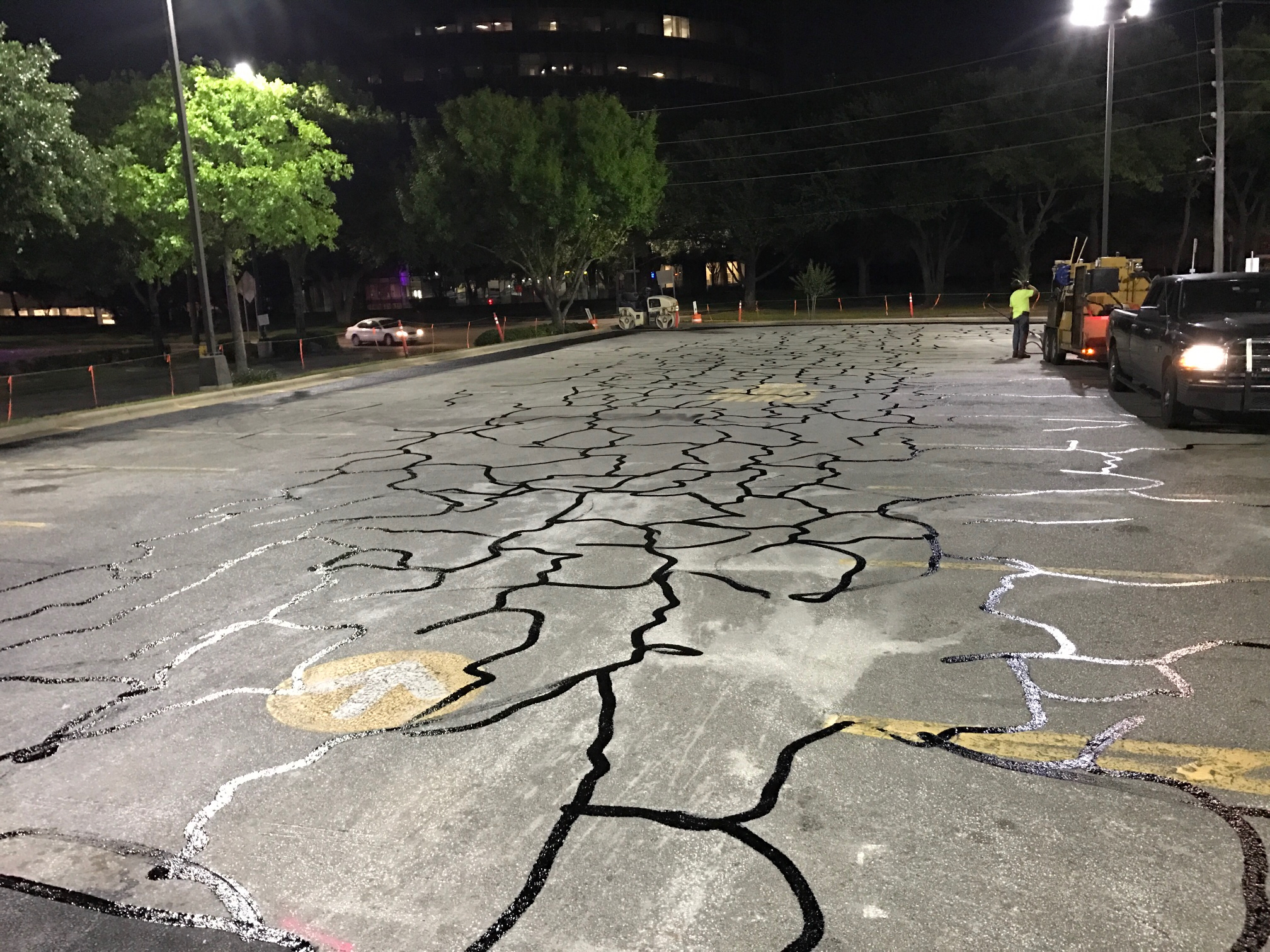
Furthermore, potholes that are left open to the elements seriously endanger the health of your pavement. Asphalt repair is one of the leading requests received by parking lot maintenance contractors, and they know several ways to take care of the problem. These include skin patching, cold patching, and partial- or full-depth patching.
What Is Skin Patching?
A skin patch for asphalt pavement can be likened to an adhesive bandage for a minor wound on your body. Contractors consider a skin patch a temporary asphalt repair that could last as long as a decade or as little as two or three years. If you plan to reconstruct or resurface your pavement within that time, a skin patch can be an economical and effective parking lot repair. However, because skin patches use hot mix asphalt, the weather must be suitable for paving companies to install and compact the asphalt properly.
What Is Cold Patching?
When the temperature is too cold for hot mix asphalt, contractors can install a cold patch to seal the pothole against the weather. A cold patch is a temporary pavement or parking lot repair that uses cold mix asphalt to fill the pothole. These paving repairs will have even shorter lives than a skin patch; most cold mix asphalt patches fail within a year, and many of them will fail within six months. Because you want to prevent an open pothole from damaging vehicles, injuring pedestrians, or causing additional pavement damage, this asphalt repair is undoubtedly better than nothing. Still, it is not the best way to fix a pothole.
What Is Partial- or Full-Depth Patching?
Of all the methods that asphalt paving companies can use to fix a pothole, a full-depth patch is the best. The contractor will cut out a square or rectangle of asphalt that is slightly larger than the damaged area. This exposes the foundation so that it can be inspected and repaired. After preparing the open area, the contractor will install hot mix asphalt, compacting each layer before installing the next one. A partial-depth patch is similar, but this method removes only the damaged layers and does not expose the foundation. Asphalt contractors usually reserve partial-depth patches for shallow potholes. Both ways are sometimes referred to as removal and replacement repairs, and both methods are typically considered permanent repairs.
Let Marathon Solutions Group Help You Determine the Best Method for Repairing Your Potholes
Marathon Solutions is a Houston paving contractor, and we have built an exemplary reputation for extraordinary craftsmanship and customer service. Our services include asphalt and concrete repair, asphalt overlay, parking lot striping, asphalt patching, crack repair, thermoplastic markings, asphalt milling, and foundation stabilization drainage improvement, asphalt sealcoating, bollard installation, concrete installation, and parking lot signage. We serve all of the Houston metropolitan area and nearby towns. If you would like a free quote, call 800-879-1147 or submit the online request form.


